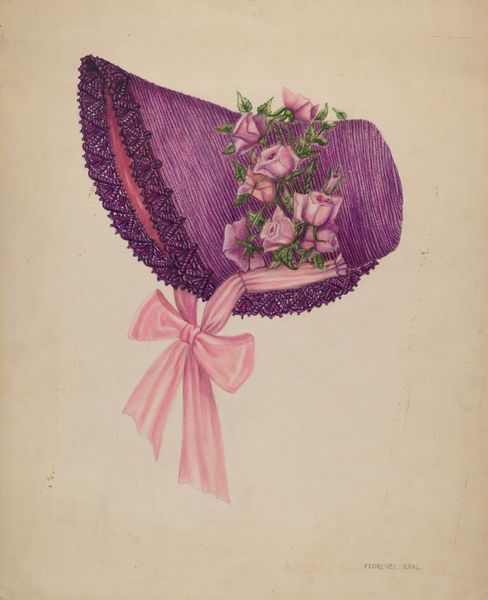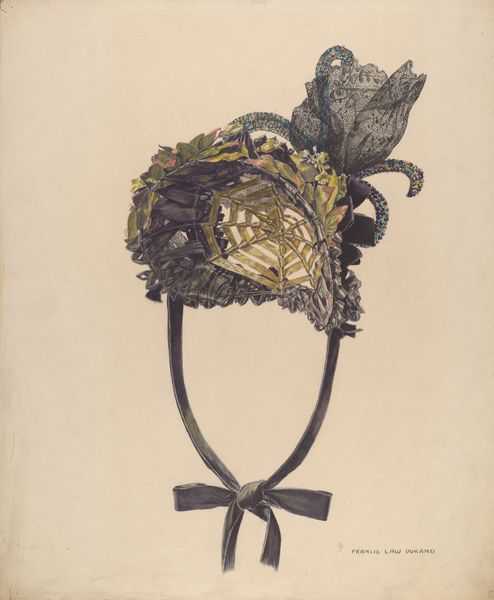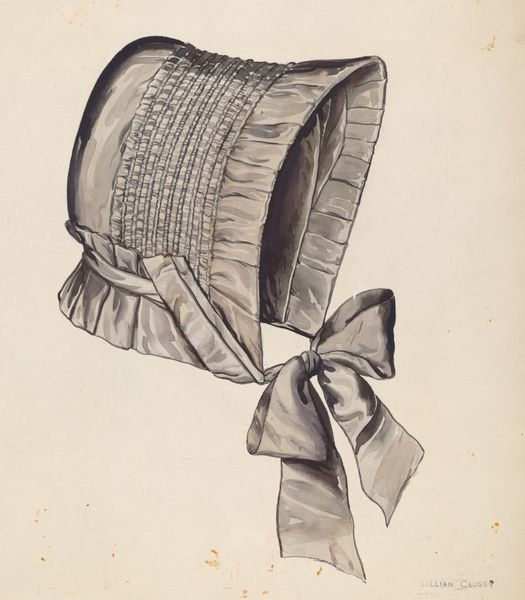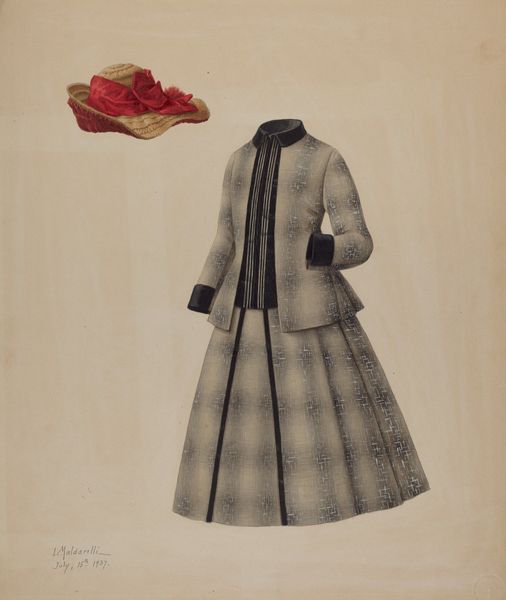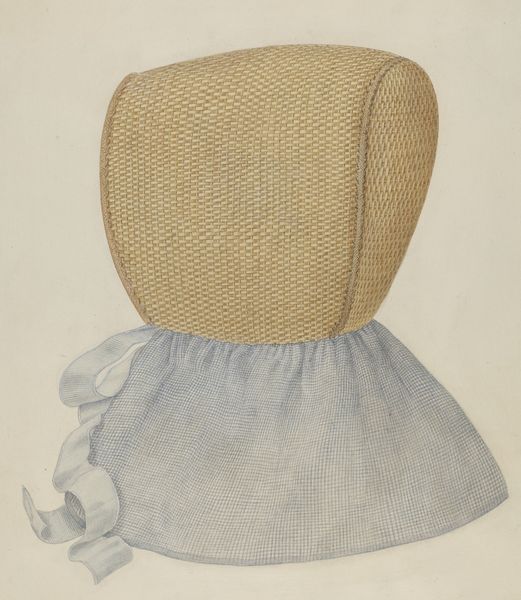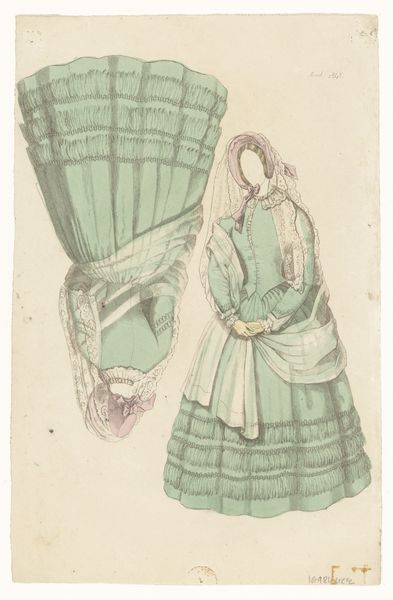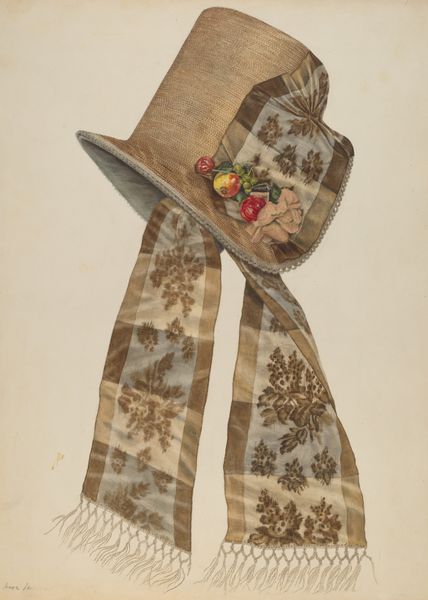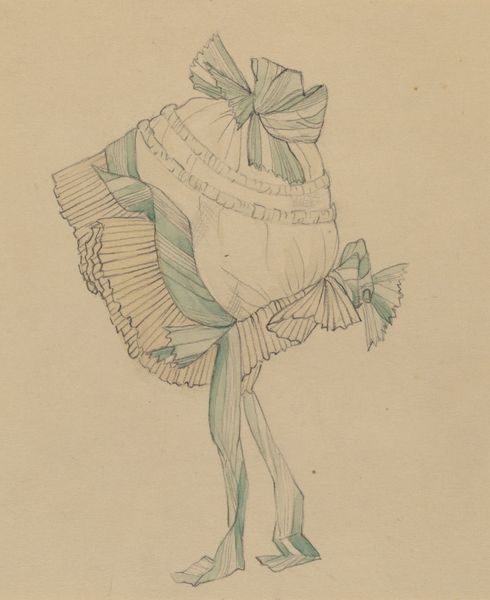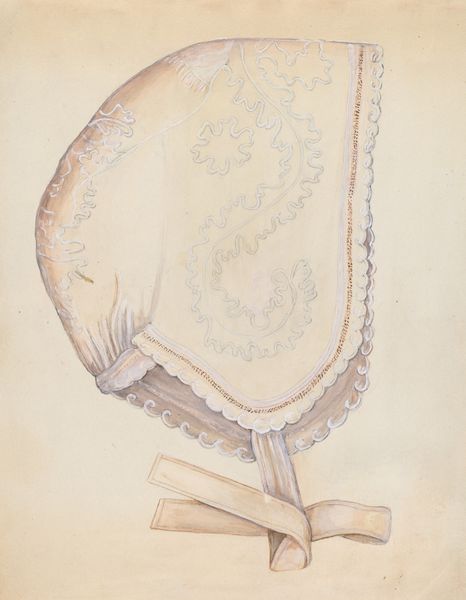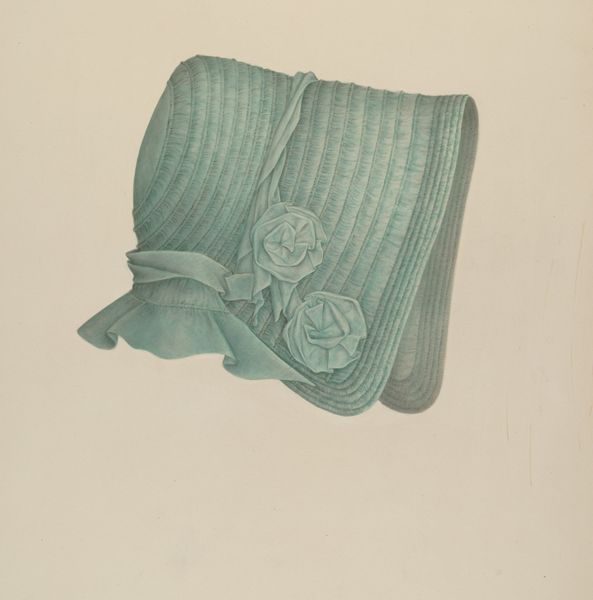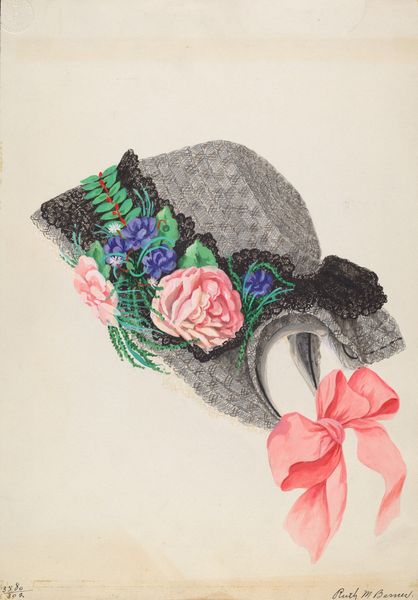
drawing, coloured-pencil, watercolor
#
drawing
#
coloured-pencil
#
charcoal drawing
#
watercolor
#
pencil drawing
#
coloured pencil
#
watercolour illustration
#
academic-art
Dimensions: overall: 47.8 x 42 cm (18 13/16 x 16 9/16 in.)
Copyright: National Gallery of Art: CC0 1.0
Curator: Before us, we have “Lace and Straw Bonnet,” dating to around 1940. The artist, Henry De Wolfe, captured this image with drawing and colored-pencil on paper. Editor: Well, my first impression is that this object feels intensely fragile and evocative of a particular moment in the past. Curator: Indeed, the artist masterfully utilizes a range of textural effects. Notice how the lace’s intricate pattern contrasts sharply with the smooth surface of the straw. It's an exercise in geometric rigor meeting organic embellishment. Editor: And yet, I am drawn to the almost ritualistic nature of fashion during this period, especially women's fashion. Hats and bonnets carried so much symbolic weight in terms of social standing, modesty, and even romantic aspirations. The rose here—perhaps for a debutante? Curator: It does invite speculation. However, I want to focus on the interplay between light and shadow within the rendering of the lace. The subtle tonal shifts give the fabric a three-dimensional presence despite being a two-dimensional image. It is fascinating, isn’t it? Editor: It certainly showcases skilled execution. But for me, the very materials point to fleeting beauty, social rituals, and, by extension, to mourning, remembrance...think about widow's lace, its association with grief, loss... Curator: An astute observation. Note also how De Wolfe's color choices create a deliberate harmony—the deep black of the lace perfectly offset by the soft straw. The entire composition is carefully considered, guiding the viewer's eye through the intricacies of its structure. Editor: Absolutely, but I'd venture that the symbolism outweighs the formality here. These crafted objects—and remember this is from around 1940, near wartime, hint at a hidden emotional world within. We are viewing social artifacts that have stories to tell if we have a way to read them. Curator: Ultimately, De Wolfe has delivered to us is not merely a still life but an exercise in disciplined observation of the texture and forms that are interwoven with our perception of art and fashion. Editor: In the end, by focusing so intensely on one symbolic accessory, the piece reminds us how much cultural weight we assign to everyday items. It allows us a glimpse into how meanings persist through the filter of artistic interpretation.
Comments
No comments
Be the first to comment and join the conversation on the ultimate creative platform.
